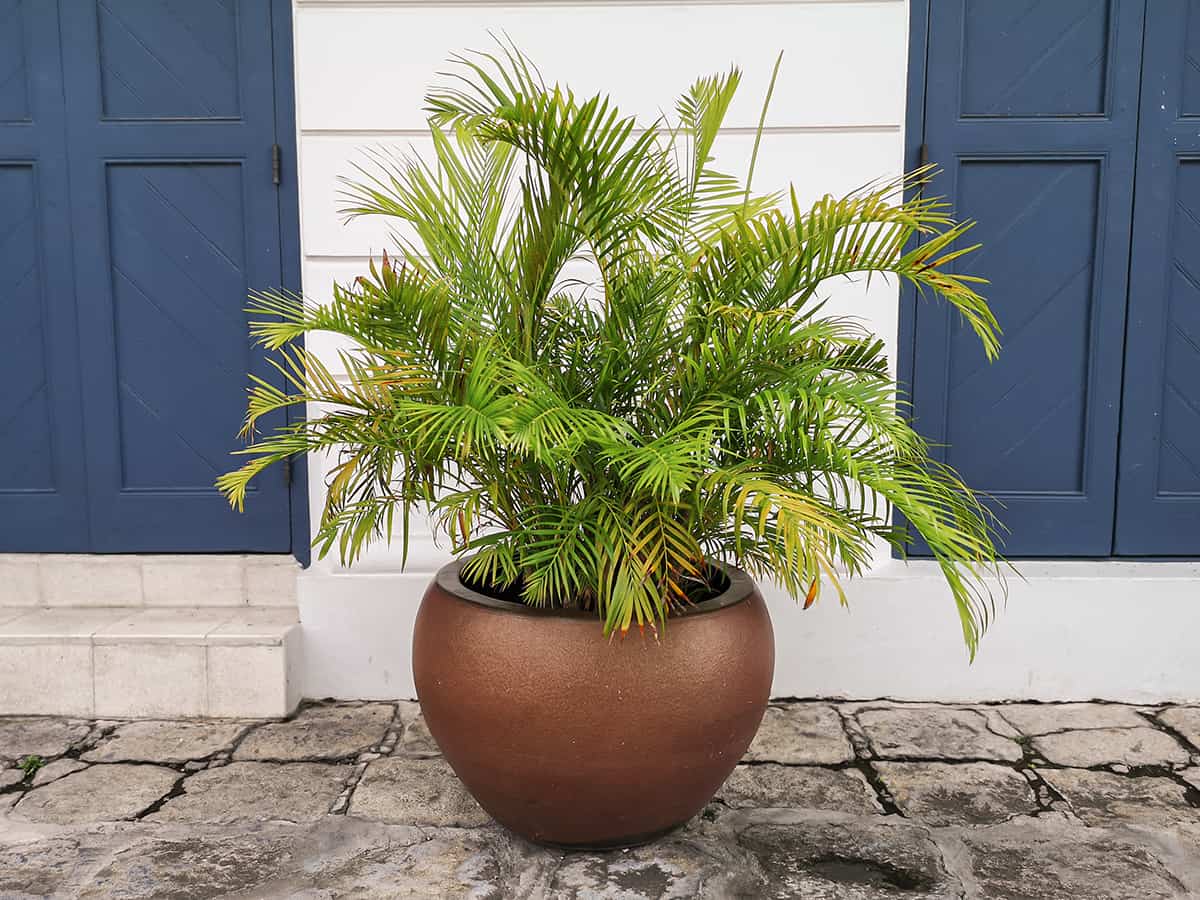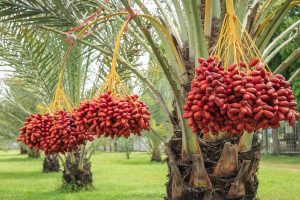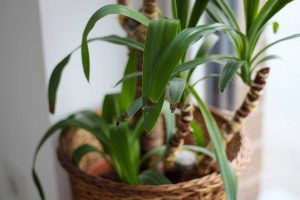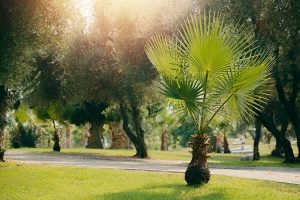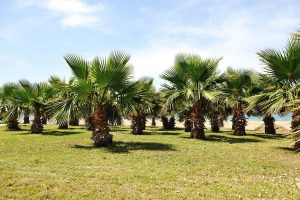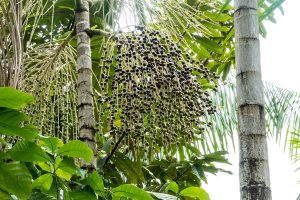Palm trees are evergreen plants, so if your fronds are turning yellow, then this can be a sign that something is wrong. Here we look at the possible issues that could be causing yellowing palm leaves, how you can diagnose the palm, and how you can treat it.
Table of Contents
Are Yellowing Palm Leaves Normal?
As palm trees age, they shed their older fronds. This is a normal part of their life cycle that occurs in most evergreens. It is typically the lower fronds that die back and fall from the tree first, so if this starts to happen, then it may be a completely normal part of your palm’s growth.
As part of this process, the leaves will first start to turn from green to yellow before turning brown and taking on a dry or crispy texture. They will then fall from the tree naturally, but this can take many months in some cases, so you can prune this dead growth once it has turned completely brown.
While the leaves are dying, they will be returning their energy back to the tree, which it can use for new growth, so it is important that you don’t remove yellow fronds until they have turned fully brown.
When Are Yellow Leaves a Problem?
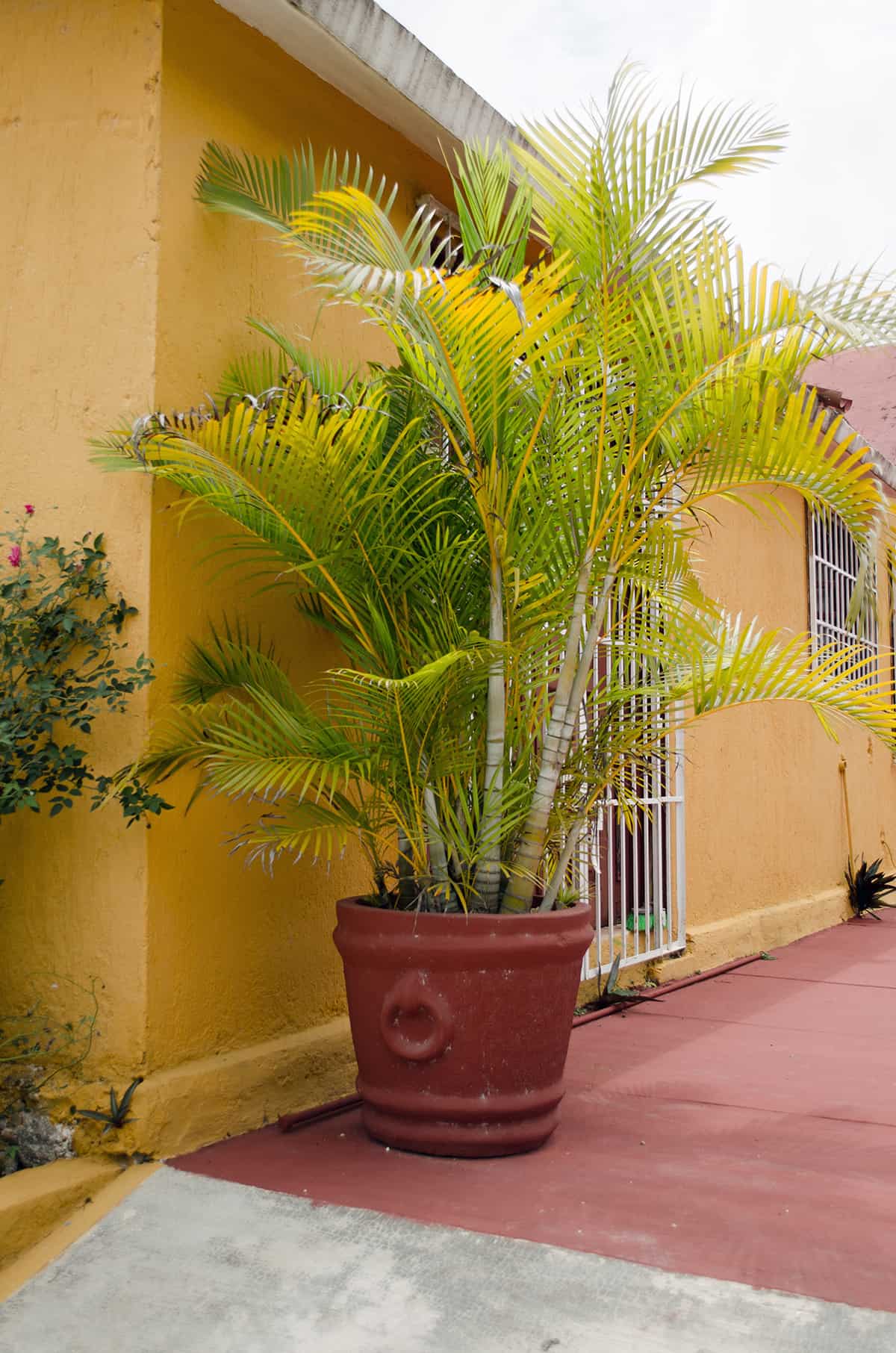
If your palm’s foliage is turning yellow at an alarming rate, then this is a key indication that there is a problem. Similarly, if new leaves are turning yellow rather than old leaves, this is also a sign that something is wrong.
The part of the leaf that turns yellow can also help you to understand if it is indicative of an issue or if it is normal.
Diagnosing and Fixing Yellowing Palm Leaves

To understand how to resolve your palm’s issue of yellowing leaves, you need first to find out what specifically is causing the problem.
Nutrient deficiency
Palm trees are not demanding in terms of the nutrients they require. They are able to survive in soil that is lacking in nutrients. However, they do need a certain amount of essential nutrients to survive and grow properly. If your palm is potted and has remained in the same soil for many years without fertilizer, then the yellowing leaves could be an indication that the soil has been depleted of nutrients.
Many palms are slow growers which don’t need to be repotted regularly, and since they are sensitive to shock caused by transplanting, it makes sense to keep them in the same pot for as long as possible.
Unfortunately, after several years the palm trees’ soil will no longer have any nutrients left to allow the plant to survive, so it will have to be repotted in new soil, or you can amend the potting soil with additives or use a slow-release fertilizer.
The type of nutrient your palm is lacking can be diagnosed based on the type of yellowing the fronds are exhibiting. For healthy green leaves, nitrogen is the most important nutrient for palms, and if the plant is not getting enough nitrogen, then the leaves will turn a faded green-yellow color.
When nutrient deficiency is caused by a lack of magnesium, this will be apparent when the tips of fronds turn a bright shade of yellow.
When an iron deficiency is a problem, the fronds will turn yellow while any veins remain green. If you can figure out specifically which nutrient the palm needs to recover, you can buy a fertilizer heavy in that nutrient. Otherwise, use a balanced fertilizer that has been diluted and add this to the soil as directed by the manufacturer.
Fertilizer excess
If you have been fertilizing your palm tree too frequently or feeding it a concentrated mix without properly diluting it, then this could lead to an excess of fertilizer in the soil. Excessive fertilizer use can burn the roots of the palm, which means they are unable to deliver nutrients and moisture to the plant.
This can result in yellowing leaves and an overall weakened plant. For outdoor palms, you should not apply fertilizer within 2 feet of the trunk because this can also cause the trunk to burn and become weaker. Instead, apply a diluted slow-release liquid fertilizer every few months throughout the growing season. This will ensure the palm gets the nutrients it needs without risking over-fertilization.
Improper watering
The type of watering technique you need to use on your palms depends on the species of palm. Some palms, typically of tropical origin, like to grow in moist conditions where the soil never dries out, whereas other palm trees can prefer drier conditions. Improper watering is the number one reason for problems with houseplants, and it can also cause issues for outdoor palms.
You need to understand your species of palm and water it accordingly. How often you should water a palm tree also depends on the typical indoor and outdoor temperature. Normally, you will water this plant more in the summer and spring, and less in fall and winter.
Too much water can cause root rot, which will prevent roots from being able to absorb moisture and nutrients, in turn making the leaves turn yellow. A lack of water in moisture-loving palms is also a problem, and this can cause yellowing leaves.
You can easily diagnose a watering problem by checking the condition of the soil. If it appears waterlogged or has mold growing on the surface, then it is almost certainly suffering from overwatering. If the surface of the soil is cracked, or it feels dry several inches down, then this palm needs to be watered more often.
Disease and pests
A disease or pest problem is quite easy to recognize because it will cause leaf yellowing in spots or in random patterns. In this case, you need to identify the specific issue. Often, a diseased plant should be safely disposed of to avoid spreading the disease to other plants. Pest problems are easier to solve. You can treat your palm with an insecticide or use neem oil if you prefer to avoid chemicals.
Sun damage and cold damage
Palms that are not accustomed to being in direct sun can easily get their leaves scorched if they experience bright direct light. If your palm has recently been moved in front of a south-facing window and is now exhibiting yellowing leaves, it is likely due to too much sun.
A scorched leaf will appear to be burnt in a particular area, and it may have turned yellow or become brown and dried out. If your palms have been subjected to a drop in temperature, this can also have a similar effect. To prevent further yellowing, move the palm back to a more appropriate location.
Root shock
If your palm tree leaves are turning yellow after you have recently transplanted it or repotted it, then this could be due to root shock. This happens when a palm tree’s roots find it hard to adapt to a new environment, and it sends the plant into shock, so it is unable to absorb moisture and nutrients as it usually does.
In this case, prevention is better than cure because there’s very little you can do to help a palm recover from root shock. When planning to transplant or move a palm, keep as much of the original soil on the roots so that the change in the soil isn’t so extreme, and try not to disturb or prune the root ball.
